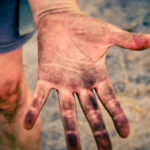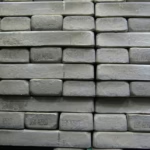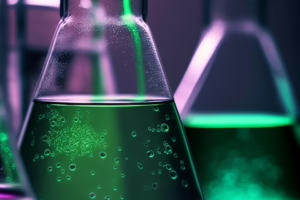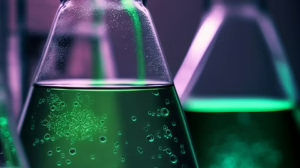Chemistry and Cuisine: How Science Transforms Our Favorite Recipes
Introduction
The intersection of chemistry and cuisine is a fascinating domain where scientific principles enhance culinary techniques and flavors. From the Maillard reaction that gives a golden crust to meat, to emulsification methods that create creamy sauces, understanding the chemistry behind cooking not only transforms our recipes but also enriches our appreciation for food. This article explores various chemical reactions and techniques that can elevate your cooking, making your culinary experiences not just delicious but also rooted in science.
Chapter 1: The Science of Flavor
1.1 Flavor Compounds
Flavor is a complex sensory experience involving taste, smell, and even texture. The primary taste sensations—sweet, sour, salty, bitter, and umami—are influenced by chemical compounds in our food. Understanding these compounds can help home cooks make better decisions about seasoning and ingredient combinations.
For instance, umami, the savory taste often associated with cooked tomatoes and aged cheeses, is primarily attributed to the amino acid glutamate. Much of our flavor experience comes from volatile aromatic compounds that we detect through our olfactory senses.
1.2 The Role of Volatile Compounds
Volatile compounds are critical for creating the aroma of food. When we cook, heat causes these compounds to evaporate, releasing scents that can enhance our enjoyment of the dish. Herbs, spices, and even the cooking method can affect the concentration and profile of these aromas.
A classic example is the combination of rosemary and garlic in roasted meats. These two aromatic compounds interact with fats, creating complex flavors that elevate the overall taste experience.
1.3 The Importance of Balance
The balance of flavors—sweetness, acidity, bitterness, and saltiness—is crucial in any recipe. Understanding how to manipulate these elements through chemistry can help in achieving the desired taste.
For example, adding a pinch of salt enhances sweetness by suppressing bitterness, allowing the sweeter notes to shine. Similarly, acidity from ingredients like lemon juice or vinegar can balance rich flavors, making a dish more pleasant.
Chapter 2: Heat and Cooking Techniques
2.1 The Maillard Reaction
One of the most important chemical reactions in cooking is the Maillard reaction. This reaction occurs between amino acids and reducing sugars when food is heated, resulting in the browning of meat, bread, and roasted coffee.
The Maillard reaction not only produces appealing colors but also creates a range of complex flavors. It’s the reason why a well-seared steak has a depth of flavor that set it apart from boiled meat.
2.2 Caramelization
Similar to the Maillard reaction, caramelization is the process by which sugars break down under heat, resulting in a rich brown color and enhanced sweetness. This technique is crucial in both savory and sweet dishes, from caramelized onions to desserts such as crème brûlée.
2.3 Sous-vide Cooking
Sous-vide cooking involves vacuum-sealing food in a bag and immersing it in a water bath at a precisely controlled temperature. This method not only ensures even cooking but also retains moisture and enhances flavor.
The science behind sous-vide is based on the understanding of how proteins and other components react to heat over time. This technique allows chefs to achieve doneness without the risk of overcooking, resulting in tender and flavorful dishes.
Chapter 3: Emulsions and Foams
3.1 The Science of Emulsification
Emulsions are mixtures of two liquids that generally do not mix, such as oil and water. The process of emulsification involves breaking down fat into smaller droplets that can be suspended in a liquid, resulting in a stable mixture like mayonnaise or vinaigrette.
Understanding emulsification requires knowledge about surfactants—molecules that reduce surface tension between liquids. Ingredients like egg yolks and mustard contain emulsifiers that help stabilize the mixture, creating a smooth texture.
3.2 Techniques for Creating Emulsions
Different techniques can be used to achieve emulsification. Whisking, blending, or even shaking can create a stable emulsion, but understanding the balance of ratios and ingredient temperatures can significantly impact the success of the process.
3.3 The Role of Foams in Cooking
Foams, like culinary foams created from emulsions, introduce air into a liquid to create a light, airy texture. Techniques like whipping cream or foaming sauces can add an impressive presentation and texture to dishes.
The science behind foams is linked to the destabilization of surface tension, allowing air to be trapped. Using tools like siphons can enhance this effect, creating innovative textures in modern gastronomy.
Chapter 4: Fermentation and Preservation
4.1 The Fermentation Process
Fermentation is a biochemical process where microorganisms such as bacteria and yeast convert sugars into acids, gases, or alcohol. This process is fundamental in creating a variety of foods, including yogurt, bread, and kombucha.
Understanding the fermentation process involves knowing the types of microorganisms involved and how temperature and time impact the fermentation rate. For instance, lactobacillus bacteria are essential for making yogurt, transforming milk into a tangy and creamy product.
4.2 The Role of Acidic Environments
Acids produced during fermentation not only contribute to flavor but also act as natural preservatives, extending the shelf life of foods. Pickling, for instance, relies on this principle to prevent spoilage by creating an acidic environment favorable for good bacteria while deterring harmful organisms.
4.3 Home Fermentation Techniques
Home cooks can experiment with fermentation techniques, such as making sauerkraut or kimchi. The key is to maintain the right balance of salt and the appropriate temperature conditions to encourage the right microbial growth.
Chapter 5: Baking Chemistry
5.1 The Role of Leavening Agents
Baking relies heavily on chemical reactions to achieve the desired texture and rise in baked goods. Leavening agents, such as baking soda, baking powder, and yeast, play crucial roles in this process.
For example, baking soda reacts with acidic components in the batter, producing carbon dioxide that causes the batter to rise. Yeast fermentation creates bubbles and contributes to the texture and flavor of bread.
5.2 The Importance of Temperature
Temperature control is vital in baking. Understanding how ingredients behave at different temperatures can significantly affect the final product. For instance, butter needs to be at a specific temperature to create a desirable texture in cookies, while other desserts may require precise control to achieve success.
5.3 The Maillard Reaction in Baking
Just as with proteins, the Maillard reaction also occurs in baked goods, contributing to flavor and color. The process helps create crusts in breads and enhances the complexity of flavors in pastries.
Chapter 6: Molecular Gastronomy
6.1 Introduction to Molecular Gastronomy
Molecular gastronomy combines scientific principles with culinary arts, utilizing techniques like spherification, gelification, and emulsification to create innovative food experiences.
The goal is to deconstruct traditional dishes and reconstruct them in ways that surprise and delight the diner, often playing with textures, flavors, and presentations.
6.2 Spherification
Spherification is a technique that involves creating liquid-filled spheres that burst in the mouth. This is achieved by combining sodium alginate with calcium chloride, allowing for a unique culinary experience reminiscent of caviar.
Understanding the chemical processes allows chefs to manipulate flavors and create unexpected pairings that can tantalize the palate.
6.3 Gelification
Gelification involves using agents like agar-agar or gelatin to transform liquids into gels. This technique can create unique presentations and textures, enhancing the overall dining experience. Chefs can play with different consistencies to create imaginative dishes.
Conclusion
The integration of chemistry into culinary practices elevates our cooking to an art form that is both innovative and scientific. By understanding the chemical reactions at play in our favorite recipes, we can refine our cooking skills and expand our culinary repertoire. Whether you’re searing a steak, baking bread, or experimenting with spherification, the knowledge of chemistry can transform ordinary dishes into extraordinary experiences. So, the next time you step into the kitchen, remember that your role as a cook is not just to prepare food but to explore the fascinating science of cuisine.
References:
- McGee, Harold. On Food and Cooking: The Science and Lore of the Kitchen. Scribner.
- Atkinson, Paul. “Molecular Gastronomy: A New Science of Taste.” Journal of Culinary Science & Technology, vol. 5, no. 1, 2007, pp. 31-45.
- Labuza, Theodore P., and Mark D. Drouillard. “Application of Microbial Fermentation.” Journal of Food Science, vol. 72, no. 2, 2007, pp. 55-62.
- DeLong, Robert. “Baking Chemistry: A Practical Approach.” Food Chemistry, vol. 110, no. 1, 2008, pp. 1-12.
By understanding these scientific principles, we’ve only just begun to scratch the surface of how chemistry can enhance and transform our favorite recipes.


























Add Comment